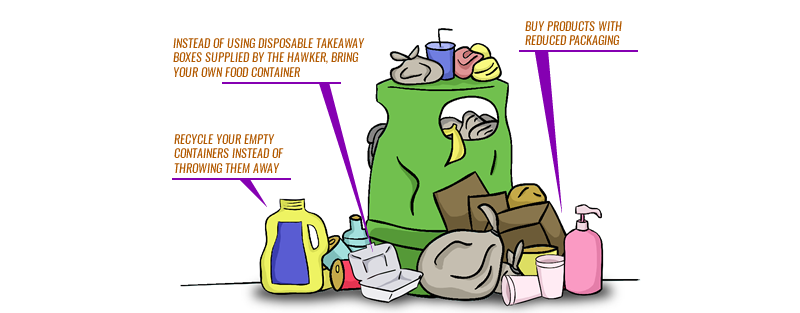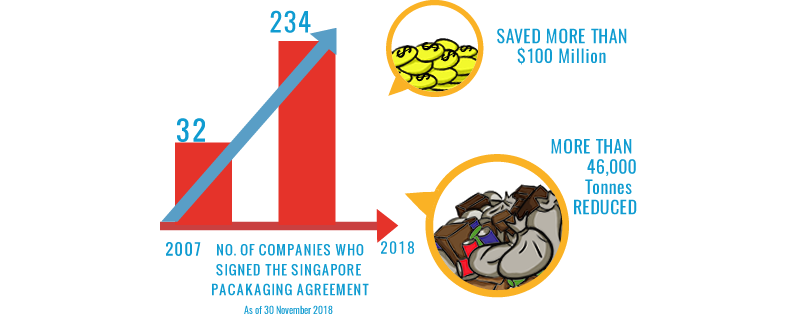Packaging Waste
Of the 1.6 million tonnes of domestic waste disposed of in 2018, one-third is made up of packaging. More than half of this packaging is made of plastic, but only 4% of plastic waste is recycled. There is potential to further reduce packaging waste.
| Why is this a problem? | What is the government doing? | What can you do as an individual? | What can you do as a business? | What are others doing? |
Why is this a problem?
Consumer products often comes with a great deal of packaging. Besides packaging required to contain the product itself, packaging is also used to protect the items during delivery and handling and for aesthetic and marketing purposes.
However, most packaging for consumer goods, such as food, drinks, cleaning products, shampoo etc is used just once before being thrown away. Many people and companies simply throw packaging away without a thought, especially if the packaging was not designed to be reused or easily recycled.
Most of the time, single-use packaging such as disposable containers and cups also cannot be recycled as they are contaminated with food.

Unnecessary packaging is not only a drain on resources, it also adds to the production of waste.
Given the lack of space for another landfill in Singapore, we need to reduce the amount of waste we produce to prolong the lifespan of our landfill for as long as we can.
What is the government doing?
Mandatory reporting is the first step towards sustainable packaging waste management.
From 2020 onwards, we will require companies that place packaging on the consumer market to collect data on the types and amounts of packaging they place on the market and draw up plans for reducing the amount of packaging that will end up as waste for disposal.
The companies that will come under this framework include brand owners, importers and large retailers including supermarkets.
We are also studying the feasibility of implementing an Extended Producer Responsibility (EPR) system to manage packaging waste.
What can you do as an individual?
Consumer action can help nudge companies into making positive changes. You can make the right choice by:
- Choosing products with less or green packaging. Products that have reduced packaging carry this eco-label:

- Avoiding single-use carrier bags, bottles, takeaway cups
- Bringing your own reusable bags, containers and utensils

What can you do as a business?
Reducing packaging waste does not just benefit the environment – it also makes good business sense. Some tips that businesses can practise include:
- Re-think and improve your production processes
- Reduce the size and thickness of the physical packaging produced
- Eliminate unnecessary packaging
- Change the way that products are packaged
- Switch to more eco-friendly forms of packaging
- Purchase the material in the proper sized container/package to reduce packaging waste
What are others doing?
-
More than 200 companies have signed the voluntary Singapore Packaging Agreement and made the commitment to reduce packaging waste from consumer products and the supply chain. Since the SPA was introduced in 2007, the signatories have cumulatively reduced more than 46,000 tonnes of packaging waste.

-
Zero Waste SG started the Bring-Your-Own Singapore Movement in 2017 to rally retailers to offer incentives to customers who bring their own reusable bags, bottles or containers. The campaign involved 430 retail outlets and reduced over 2.5 million pieces of plastic disposables.


